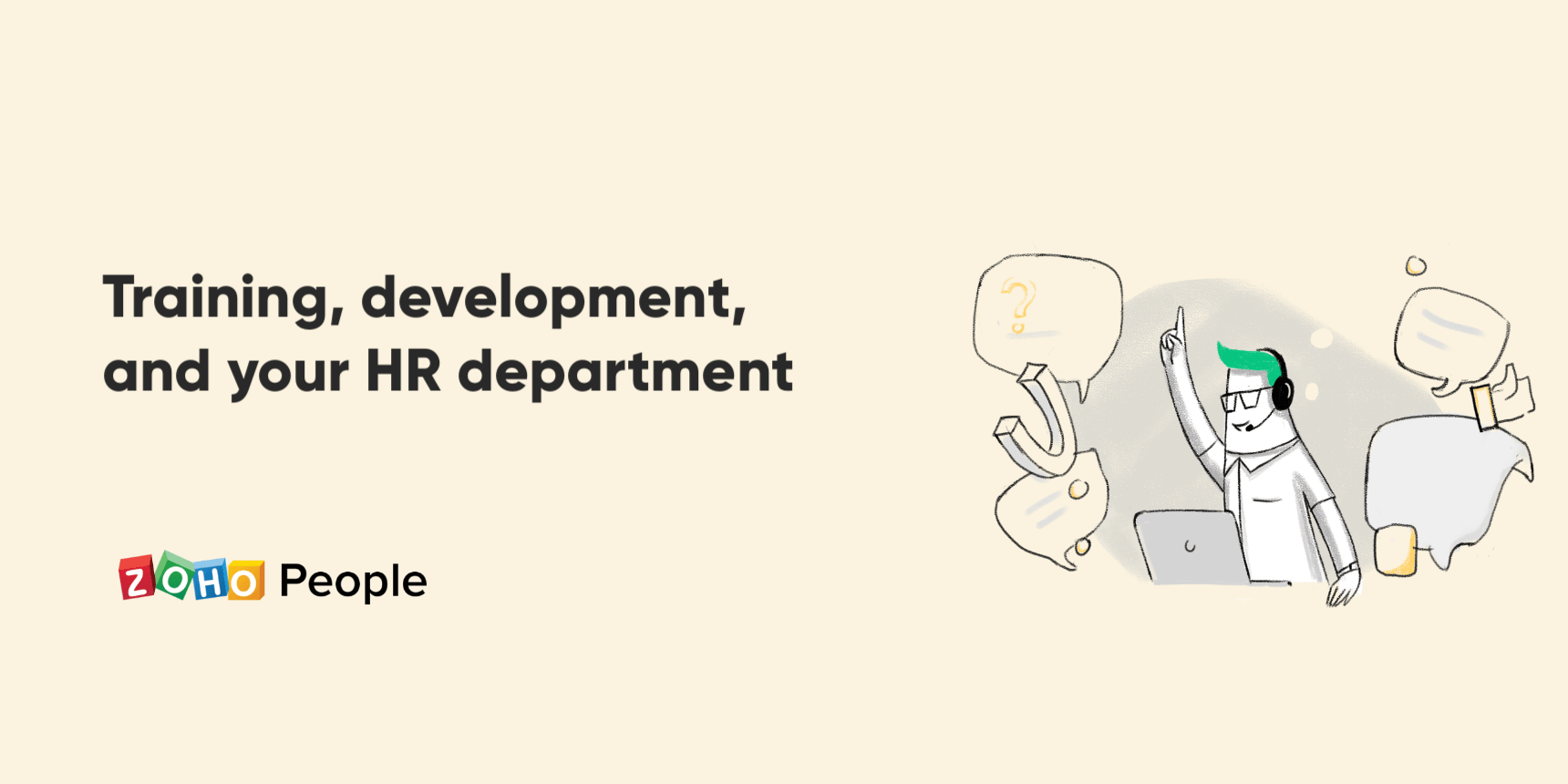- HOME
- HR insights
- Is training a part of HR?
Is training a part of HR?
- Last Updated : August 23, 2023
- 3.7K Views
- 4 Min Read

Millennial and Gen Z employees are looking for career growth, and they prefer to work in environments that provide internal opportunities for advancement and continuous learning. Seeing as they make up most of today's workforce, it's important not to underestimate the importance of a good training and development program. Not only does it equip employees with all the skills required to do their jobs well, but it also helps them have a happier professional life. Organizations that don't recognize the value of training often end up losing their most talented people.
Training and development programs have always been a part of the HR department. Usually, HR managers will coordinate with different department heads to understand the training needs of their teams and organize suitable programs based on those needs. However, some organizations do have separate Learning and Development (L&D) professionals who are responsible for fostering a culture of growth in their organization. L&D professionals often report to an HR manager, but this depends on the size and hierarchy of an organization.
If your organization is new to training and development or having trouble deciding who should take care of what, we've got you covered. In this article, we're listing the major responsibilities of training organizers so you can decide if you need to appoint a separate L&D professional or if you can manage it with your existing HR team.
Analyze training needs and skill gaps
Conducting an analysis of training needs is the first step towards organizing effective training programs. Training organizers must:
Understand the organization's training goals
Lay out the skills required to achieve those goals
Evaluate the existing skills of employees
Identify any employee skill gaps
As part of this process, it's important that they conduct interviews with department heads and collect survey responses from employees to better understand skill gaps as well as employee interests. Knowing about how employee interests align with the skills you're looking to teach will be vital to crafting appealing programs down the line. This analysis will also give training organizers insight into which employees should be trained in which skills.
Set the training and development budget
After finalizing the topics, training organizers need to set a specific budget for the training programs to prevent overspending. Trainers need to take into account all the costs related to identifying training needs, developing course materials, implementing tech tools, hiring course instructors, using learning facilities, creating certificates, and more. After estimating all of these costs, they will have to decide the overall budget based on the value the training brings to the organization.
Developing the course
The success of the training programs depends largely on how well it is designed. So, trainers need to develop and design the training program in such a way that is useful to employees. Here are some of the responsibilities that come with this step:
Setting learning goals to visualize what they wish to achieve from the training programs
Developing the syllabus for the course and separating it into different modules
Creating user-friendly learning materials, such as documents, URLs, videos, or podcasts
Implementing a learning style that is most suitable for their learners
Setting a deadline for completing the course
Getting the right course instructors onboard
Creating assignments and assessments
Delivering the course to employees
One of the key responsibilities of the training team is to select the right platform for employees to take the course on. It can either be classroom learning, e-learning, blended learning, or mobile learning—all based on employee preferences. For example, classroom learning means making arrangements for a course instructor and a conference room with PowerPoint support and speakers. However, with remote work becoming more prevalent, more organizations are moving towards mobile learning and e-learning. This allows learners to take the courses from anywhere at any time. To better facilitate e-learning and mobile learning, we recommend a cloud-based Learning Management System (LMS).
Measuring the training results
After employees complete the course, the training team has to determine if the program was successful in achieving the desired results. They have to work closely with the managers to observe how employee performance has changed after the training. It's also important for training teams to receive feedback from the learners so they can adjust the training according to their preferences and deliver better results in the future.
Employee training and development is one of the key aspects that can take organizational success to the next level. However, its efficiency is largely dependent on how well it's managed. Depending on the size of your organization, you can make training either a part of your HR department or form a separate learning and development team to drive better results. In any case, having HR software that comes with a training and development system can be really helpful to your organization.
Also see:Tips for training remote employees
 Tarika
TarikaContent Specialist at Zoho People


